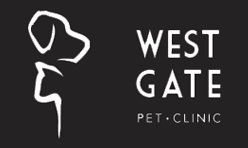Dental care is an important and often overlooked portion of animal health care. As our patients are living longer lives with improved medicine and care, oral health can become especially important in a patient’s later years.
Studies in human medicine have linked periodontal disease with cardiac disease, and some studies in veterinary medicine suggest the same. It is therefore very important that we, as owners, give our pets the best possible care of their oral health as this will unquestionably improve their quality of life.
A complete oral health care program starts at home, and then is complemented by your veterinarian with regular examinations, scaling and polishing.
Brushing your pet’s teeth on a daily basis is ideal; albeit easier said than done, quite often people find it to be easier than initially thought. Click Here to view a video on how to brush your pet’s teeth.
Diet is another key component to oral health care. One such example is Hill’s Prescription Diet t/d – this is a food where the kibble is not only enlarged, but the fiber content is increased, and constructed such that the kibble forces the tooth to drive a bit further down, hence creating friction on the tooth surface that minimizes calculus build-up.
Dental chews are another method to assist in calculus control. These are often rawhides or compressed wheat gluten – some may be impregnated with a gentle antibacterial to aid in plaque control. This, in combination with the physical abrasion of chewing, helps minimize calculus build-up.
There is a myriad of other products on the market that are designed to help with oral health. These include oral rinses, drinking water additives, treats, sprays, etc. It is important you discuss these with your veterinarian in determining which plan and tools work best for your pet.
Another key component to your pet’s oral health care is the professional exam, scale and polish (Oral ATP where A=assessment; T=treatment; P=prevention). Just like humans need one every six months (and we brush out teeth at least twice daily!), our pets need one every 6-12 months. This is key in getting underneath the gum line where bacteria can escape our brushing and other methods. In addition, this allows us a thorough exam to detect abnormalities that may go unnoticed on an exam where your pet is
awake. Lastly, dental radiographs are a key component to any professional exam – this allows us to detect disease that may otherwise not be visible above the gingiva.
Oral health is a key component to your pet’s overall care – be sure to discuss with your veterinarian to establish the best program for you and your pet.
What's Next
Call us or schedule an appointment online.
Meet with a doctor for an initial exam.
Put a plan together for your pet.


